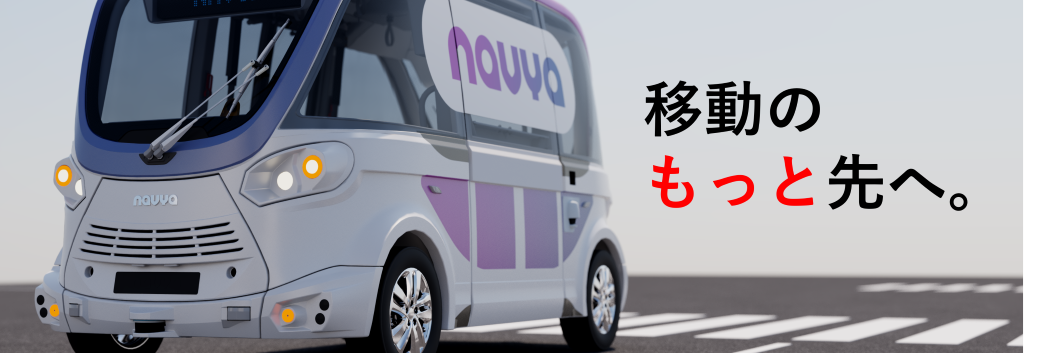
取扱製品
Navya Mobilityは、移動に新たな価値を創出する「自動運転EVバス」や、空港や工場などで、人手が少ない時間帯の貨物輸送を支援する「自動運転トラクター」など、最先端の自動運転技術を搭載した革新的な車両を取り揃えております。
自動運転EVバス
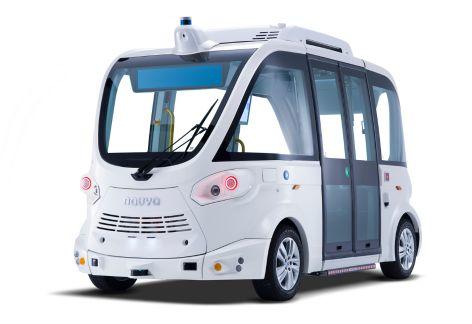
自動運転トーイングトラクター
(Charlatte Autonom社)
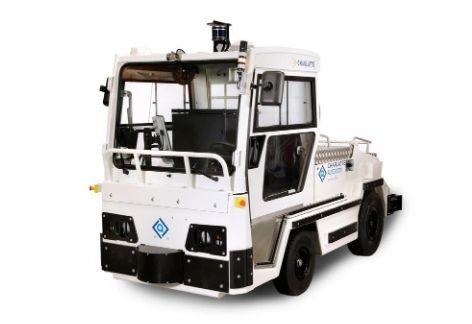
まちづくり
観光地
公園・テーマパーク
空港
工場
湾岸
自動運転EVバス
EVO(エヴォ)とARMA(アルマ)の2種類の自動運転EVバスを提供しています。これらの車両は、移動に課題を抱える人々の支援や渋滞緩和など、社会課題の解決に寄与します。観光地や公園・テーマパーク、工場などのエリアでは、回遊性や収益性を向上させ、利用者のロイヤリティ向上やコスト改善にも貢献します。さらに、公共交通ネットワークと接続することで、移動に新たな価値を創出します。国内のさまざまな地域で実証実験や定常運行に使用されており、安全性、信頼性、快適さを兼ね備えた移動を実現します。
EVO(エヴォ)
EVOは、乗務員を必要としない「レベル4*」の自動運転技術を搭載。最新のインテリジェント技術と高性能を兼ね備えた新型の自動運転EVバスです。ハンドルやペダルのないこの車両は、新しい時代のモビリティソリューションとしての移動体験を実現します。
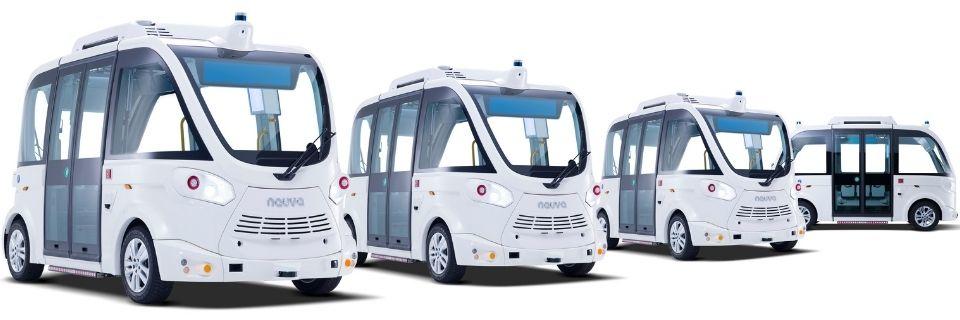
自動運転システム
レベル 2/4*
ハンドル・アクセル・ブレーキなし
(セーフティ機能あり)
車両サイズ
全長 4.78m
全幅 2.10m
全高 2.67m
乗車定員
私有地:15名(座席11人 立席4人)
公道:12名(座席9人 立席3人)
最大速度 25km/h
日本国内推奨速度
20km/h未満
EV(電気自動車)
最大走行時間 9時間
走行距離 100km
*ODD(運行設計領域)に基づく走行環境条件を満たす場合に限ります
システム構成
1
LiDAR
2Dおよび3Dの認識技術により、環境をマッピングし、正確な位置特定と障害物を検出します。
2
オドメトリ
タイヤの回転速度を測定することで、車両の速度を正確に推定し、位置の確認を行います。
3
GNSS
GPSセンサーとビーコンの通信により、常に車両の正確な位置を特定。誤差わずか数cmの精度を実現します。
4
カメラ
前後に1つずつ設置し、自車周囲の安全を確認。常時録画されたデータは、分析やリモート監視にも活用します。
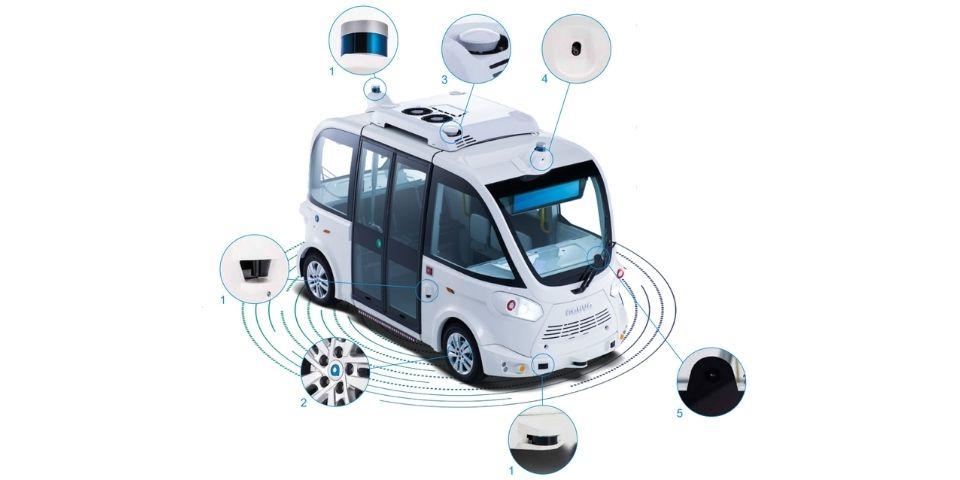
5
感知センサー
外部の光や雨滴を感知してオートライトやオートワイパーを作動させます。
●
SLAM
LiDARで作成した地図情報と、現在のLiDAR情報をマッチング。車両の位置を特定します。
●
V2X
信号等の道路に設置してある様々なインフラ側からのデータを受信し、交通ルール等を遵守します。
●
遠隔監視・制御
万が一のときのために、集中管理センターでの監視、及び介入が必要な場合には遠隔制御を実施します。
ARMA(アルマ)
ARMAは、EVOの一世代前のモデルです。ハンドルやペダルのないこの車両は、新しい時代のモビリティソリューションとして、さまざまな場所で実証実験や定常運行に使用されています。
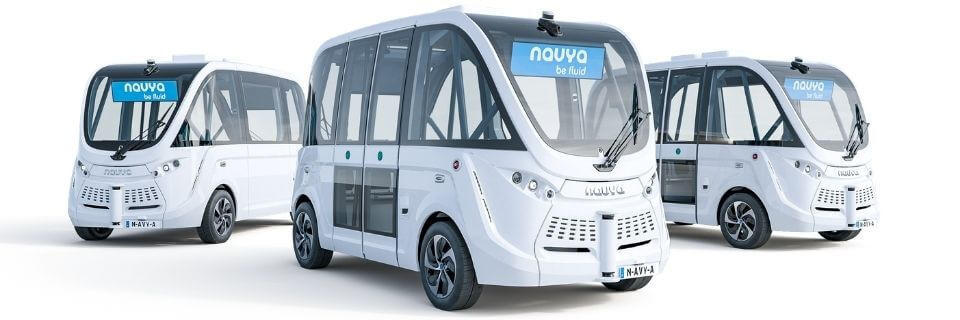
自動運転システム
レベル 2/4*
ハンドル・アクセル・ブレーキなし
(セーフティ機能あり)
車両サイズ
全長 4.75m
全幅 2.11m
全高 2.65m
乗車定員
私有地:15名(座席11人 立席4人)
公道:12名(座席9人 立席3人)
最大速度 25km/h
日本国内推奨速度
20km/h 未満
EV(電気自動車)
最大走行時間 9時間
走行距離 100km
*ODD(運行設計領域)に基づく走行環境条件を満たす場合に限ります
システム構成
A
GNSS
GPSセンサーとビーコンの通信により、常に車両の正確な位置を特定。誤差わずか数cmの精度を実現します。
B
カメラ
前後に1つずつ設置し、自車周囲の安全を確認。常時録画されたデータは、分析やリモート監視にも活用します。
C
LiDAR
2Dおよび3Dの認識技術により、環境をマッピングし、正確な位置特定と障害物を検出します。
D
オドメトリ
タイヤの回転速度を測定することで、車両の速度を正確に推定し、位置の確認を行います。

E
IMU
加速度センサと角速度(ジャイロ)センサを組み合わせて車体の挙動をセンシングします。
●
SLAM
LiDARで作成した地図情報と、現在のLiDAR情報をマッチング。車両の位置を特定します。
●
V2X
信号等の道路に設置してある様々なインフラ側からのデータを受信し、交通ルール等を遵守します。
●
遠隔監視・制御
万が一のときのために、集中管理センターでの監視、及び介入が必要な場合には遠隔制御を実施します。
導入事例
Navya Mobilityの自動運転ソリューションはこれまでに32か国、220台の導入実績があります。*1
EVO/ARMAは、日本国内において定常運行6件、実証実験運行50件の実績があります。*2
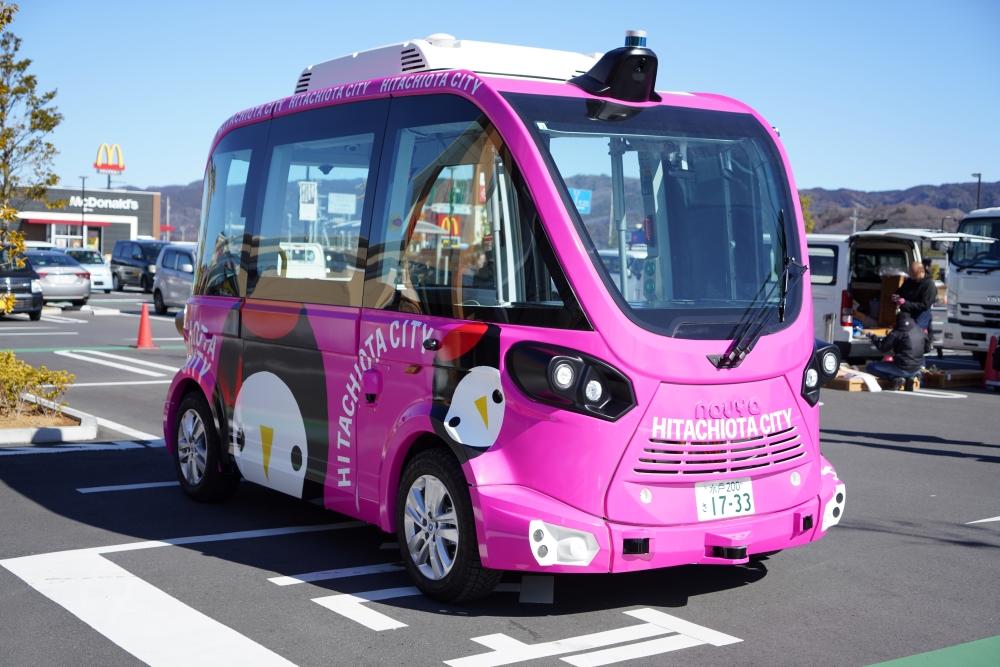

茨城県 常陸太田市(定常運行中/EVO)
市街地で定常運行を行い、地域住民の移動を支援するとともに、まちの利便性向上に貢献しています。また、デジタルマップや自治体アプリと連携し、バスの現在地や運行ルート周辺の情報を提供しています。さらに、2025年2月にはルートを拡大。まち全体での広がりが期待されています。
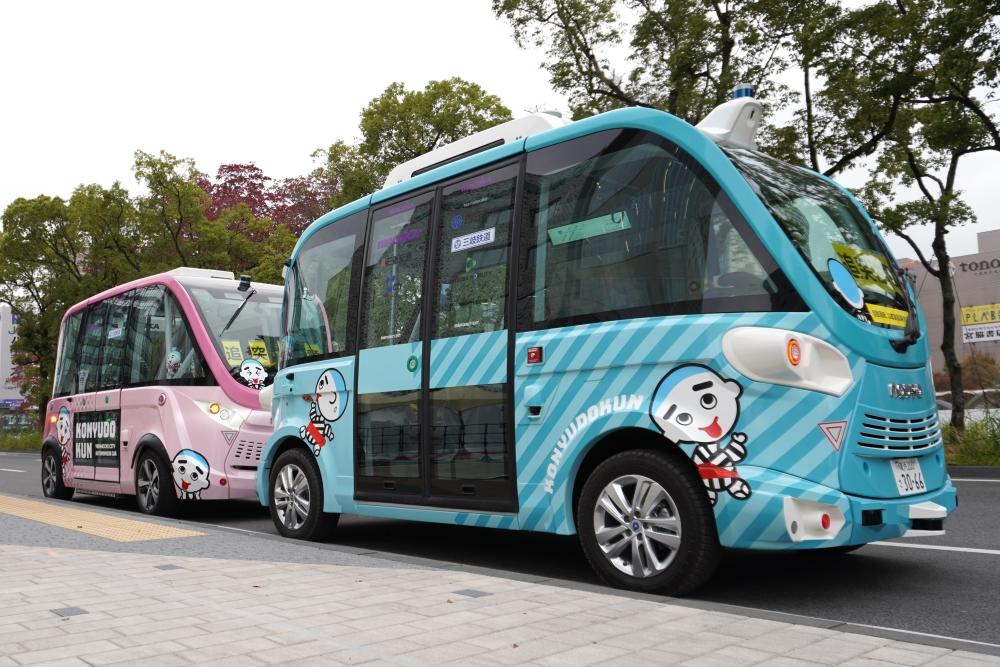

三重県 四日市市
中心市街地の回遊性向上を目指し、定常運行の実装に向けた実証実験が毎年開催されています。5回目となる今回は、まちのイベントと連携して盛大に行われ、自動運転バスの認知度向上が確認されました。遠隔監視の通信状況や走行ルートの検証など、実装に向けた有益なデータが得られる取り組みが進められています。
茨城県 境町(定常運行中/ARMA)
国内初の自治体主導による自動運転バスの定常運行にARMAが採用されました。運行開始から4年が経ち、地域に着実に定着してきています。町内を結ぶ生活路線として、住民の利便性向上や回遊性促進に貢献しています。さらに、遠隔監視センターから自動運転バスをリアルタイムで監視。安全でスムーズな運行を支えています。
東京都 羽田イノベーションシティ(定常運行中/ARMA)
商業施設内の無料循環バスとして定常運行を行っています。2024年8月からは、晴天時に限り、国内初となるレベル4(乗務員なしの完全自動運転)の運行を開始しました。施設来場者に構内移動の利便性を提供するとともに、自動運転技術を体験できる機会を提供しています。
*1:2025年1月時点 *2:2024年12月末時点
主要諸元

お問合せ
製品に関するご質問や導入に関するご不明点などございましたら、こちらよりお気軽にお問い合わせ下さい。
自動運転トーイングトラクター
Navya Mobilityの子会社であるCharlatte Autonomが提供する自動運転トーイングトラクターは、空港や工場での貨物やコンテナを自動搬送します。省力化を実現し、労働力不足やコストの改善に貢献します。空港や工場・プラント、港湾など、大規模エリアにおける貨物の自動搬送に活用できます。
AT135
AT135は、効率的な貨物輸送を実現する自動運転EVトラクターです。最大25トンの牽引能力を誇る強力な駆動力と、高度な自動運転システムを搭載しており、空港や工場での貨物輸送に最適なソリューションを提供します。
また、運転席を備えているため、特定の操作が必要な際には手動モードへの切り替えが可能です。さらに、遠隔監視機能により安全性を確保しながら運用できます。自動運転による貨物輸送は、悪天候時を含めて効率性と信頼性を向上させ、人為的な負担を軽減します。
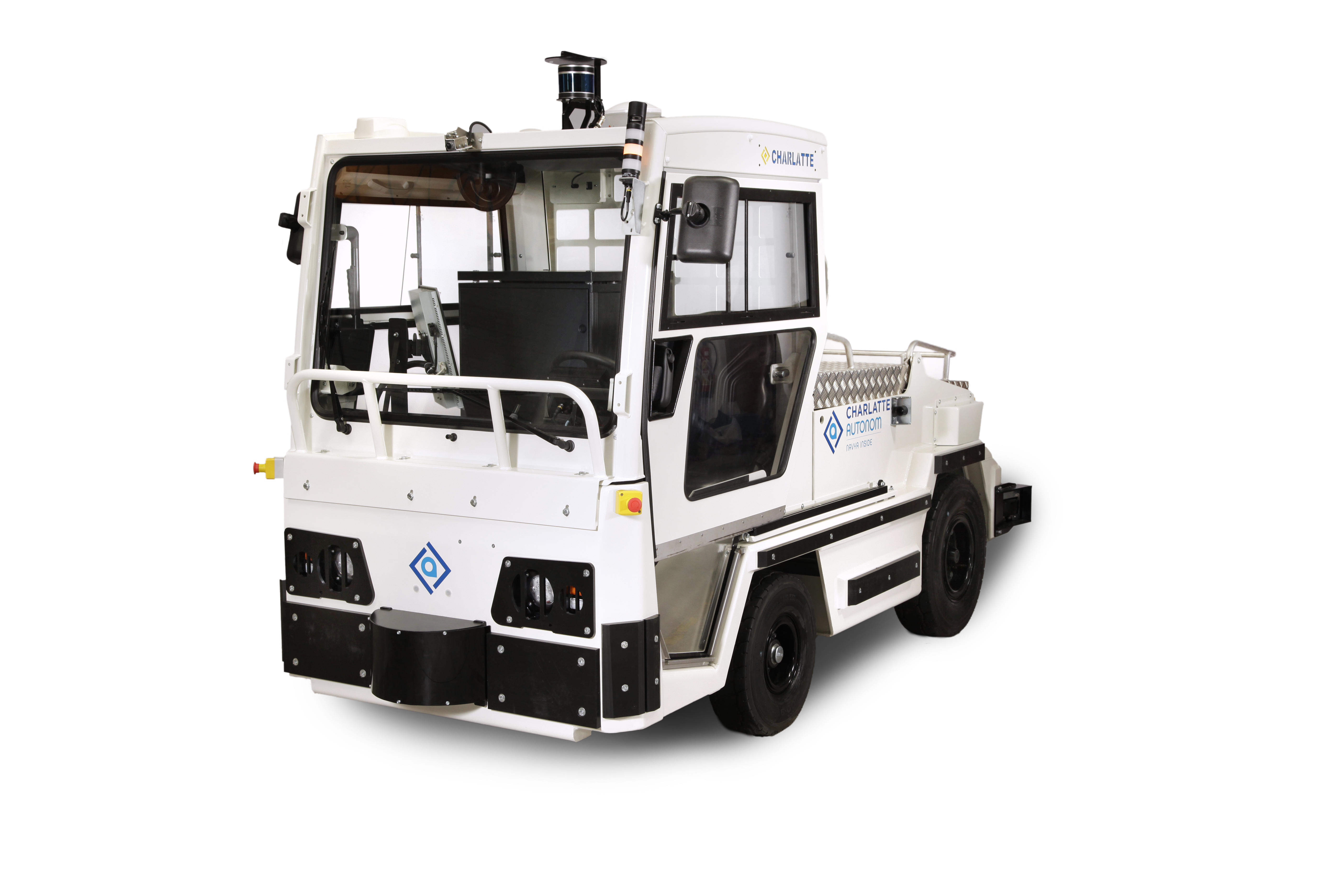
自動運転システム
運転席あり
手動運転も可能
最大牽引重量 25t
自動運転時 16t
最高速度 15km/h*
手動運転時 25km/h
車両サイズ
全長 3.27m
全幅 1.62m
全高 2.15m
EV(電気自動車)
*牽引量により最高速度は変わります
システム構成
A
LiDAR
3Dタイプを5つ配置。3Dの認識技術により、環境をマッピングし、正確な位置特定と障害物を検出します。
B
GNSS
GPSセンサーとビーコンの通信により、常に車両の正確な位置を特定。誤差わずか数cmの精度を実現します。
C
オドメトリ
タイヤの回転回数を元に速度や走行距離を算出します。
D
IMU
加速度センサと角速度(ジャイロ)センサを組み合わせて車両の挙動をセンシングします。
E
カメラ
フロントとリアに1つずつ設置。車両周辺の安全確認を行います。
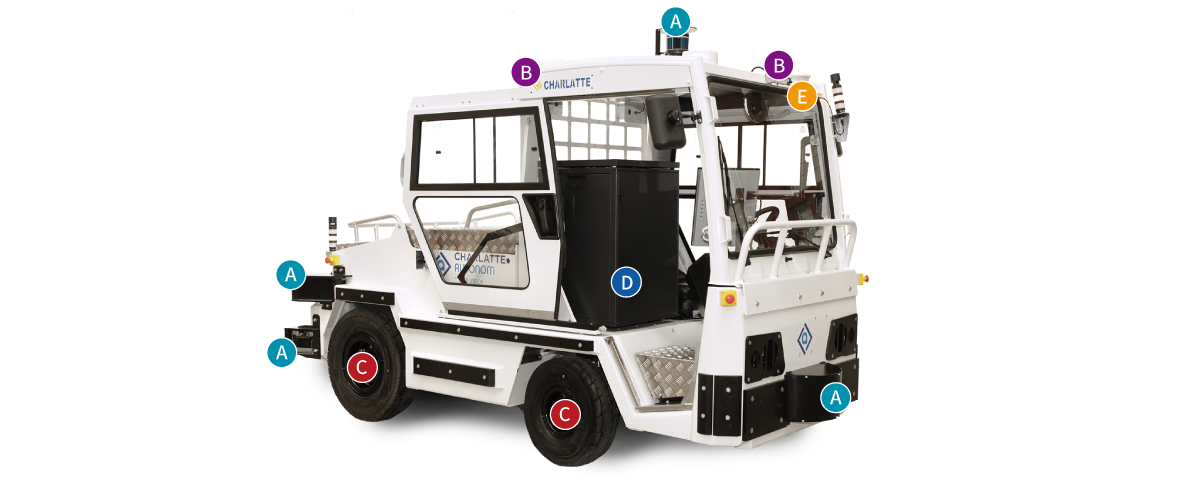
導入事例
フランス トゥールーズ
トゥールーズ・ブラニャック空港内にて実証実験を行っています。約1.5km のルートで手荷物を積載したコンテナを自動搬送しています。
Navya Mobilityについて

2014年にフランス リヨンで自動運転システムの開発企業として設立。2015年9月には「ファースト&ラストワンマイル」の移動ソリューションとして自動運転EVシャトルバスの提供を開始。レベル4の自動運転を実現するための開発に注力。また同社の10年以上に渡る経験は各自治体や交通事業者での自動運転車両の円滑なオペレーションを可能にします。自動運転と物の移動を変革する先進的企業を目指し、都市や私有地における移動の未来を切り拓き続けています。
資料ダウンロード
製品に関する資料はこちらよりダウンロード下さい。特徴や仕様の詳細についてご案内しております。
お問い合わせ
製品に関するご質問やご不明点などございましたら、こちらよりお気軽にお問い合わせ下さい。
